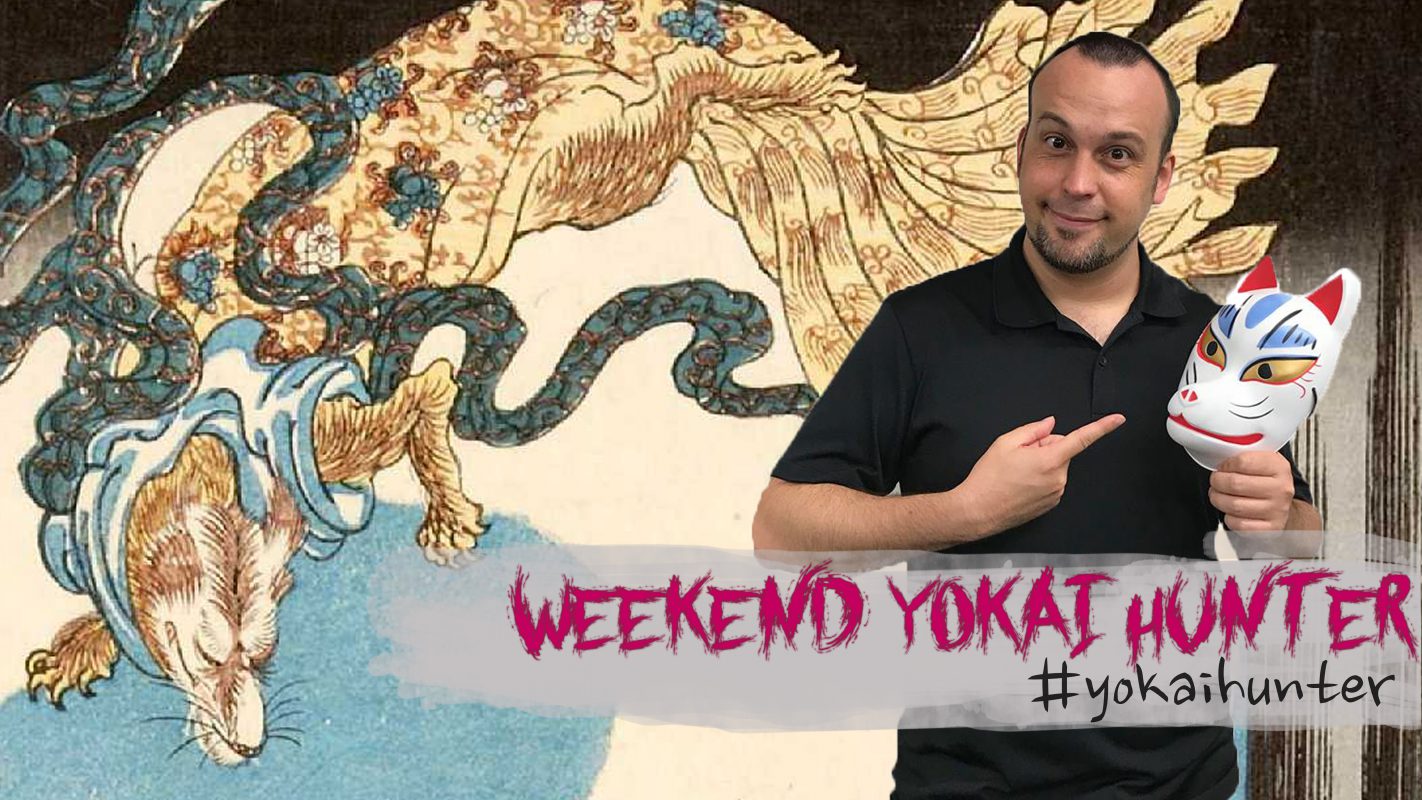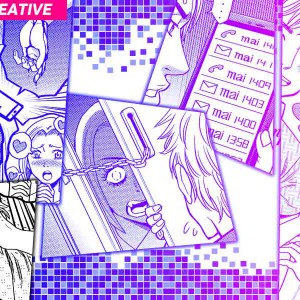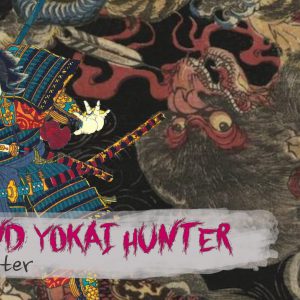
Hello again my ghoulish brethren and welcome back to another installment of every folklore fanatic’s favorite article… the Weekend Yokai Hunter! After finally untangling myself from that pesky roll of cloth, I have decided to shine a light on one of Japan’s most common, yet confusing Yokai…
…the KITSUNE!
Growing up in England, I would regularly see these creatures both out in the wild and wandering the town’s streets at the crack of dawn. I’ve always felt these beasts have an air of mystery about them, and it would appear that the Japanese evidently share this sentiment…
WHAT ARE…Kitsune?

Behold! A nine-tailed Kitsune!
Unlike most of the Yokai we’ve looked at throughout this series, the Kitsune’s name doesn’t have any particular meaning since it’s simply means “fox” in Japanese. Though regular foxes are indigenous across the entire northern hemisphere, here in Japan they are viewed slightly differently.
In addition to regular wild foxes that frolic in the mountainous countryside, there are actually two other types of Kitsune; ‘good, protective’ foxes, and ‘bad, mischievous’ ones. The former are considered to be messengers of the shinto god ‘Inari’ and can be found decorating the many Inari shrines throughout Japan.
For centuries, the Japanese have worshipped the Inari as the god of fertility, tea, sake, agriculture, prosperity, success and, most importantly perhaps, rice. Inari Kitsune are often white in colour, and are said to be protective of humans and places, bringing good fortune to those make offerings at the shrine.
Making up a third of all shinto shrines in Japan, many Inari shrines are protected by Myōbu, two large celestial fox statues, that are said to both guard the shrine, along with being symbols of good fortune.
The other variation of Kitsune, would be the mischievous Yokai version. These shape-shifting foxes love to play pranks on humans (much like the Tanuki do) ranging from conjuring up illusions to disorient people, to disguising themselves as beautiful women to seduce men and steal their valuables.

A handsome looking Myōbu Kitsune stands guard!
Though that may sound bad enough, these critters can sometimes go one step further and even possess people, though the Kitsune must have been angered in some way before considering a possession. The unfortunate symptoms of a Kitsune possession include pain, madness, hysteria, along with exhibiting strange behavior such as running through the street naked, acting violently, barking, spitting, and even foaming at the mouth! Just thinking about having to endure such indignity gives me the shivers!
Regardless of whether they are ‘good’ or ‘bad’, all Kitsune are said to potentially possess as many as nine tails! It is said that the greater the number of tails, the older and more powerful the Kitsune is. Though legends tend to vary, it’s commonly believed that Kitsune who acquire a ninth tail will immediately see their fur turn pure white or gold.
HUNTING FOR…Kitsune
Though Inugami shrines are more prevalent in western Japan, Inari shrines make up more than a third (32,000) of all shinto shrines in the country, so you could potentially encounter these mischievous foxes anywhere!
That said, there are some spots which are particularly worth exploring. People traveling to Kyoto should definitely check out the incredible Fushimi Inari-taisha shrine. There you can enjoy the beautiful torii path leading to the outer shrine, as well as the Kitsune fountain and statues within. Visitors to Tokyo should also check out either Toyogawa Inari Tokyo branch temple, or (my personal favorite) the Shōzoku Inari shrine in Ōji. Nestled away in a quiet back street, visitors can both enjoy the elegant Myōbu Kitsune statues on display, as well as the shrine’s serene atmosphere.

The serene Shōzoku Inari shrine in Ōji, Tokyo.
Kitsune TODAY!
With the large number of Inari shrines throughout the country, it almost goes without saying that Kitsune are still very much part of present day culture in Japan. Kitsune aren’t only embraced by the populace, but are enthusiastically celebrated in festivals, such as the Hida-Furukawa Kitsune-bi Matsuri in Gifu, not to mention the popular Ōji Kitsune night march.
Kitsune have even made it into culinary Japan! Due to their perceived love of abura-age (thin slices of fried tofu), ‘Kitsune udon’, basically fried tofu on noodles, was named in their honour (… at the risk of sounding like a miserable git here, I feel it’s my duty to point out that foxes are carnivorous and actually have no interest in fried tofu, but you know, tradition is tradition!)

Sayori Ochiai’s ‘Gingitsune’.
Naturally, manga and anime have also been equally visited by these guys. Notable titles being Midori Yuma’s ‘Kakuriyo no Yadomeshi’, Satoshi Takagi’s ‘Kitsune no Yomeiri’, and my personal recommendation, Sayori Ochiai’s ‘Gingitsune’ the charming story of a little girl who has the sole ability of being able to see the fox spirit protecting her town’s local Inari shrine.
Lastly, as a voracious metal fan, I would be remiss if I didn’t say that the Japanese idol band ‘Babymetal’ (I’m not a fan, sorry) heavily borrow from Kitsune folklore and incorporate fox face masks, and hand signals into their persona. Now even music fans around the world can celebrate Kitsune!
And on that bombshell, I bid you adieu as I plan to grab a bowl of Kitsune udon on my way home from yet another Yokai escapade. I hope you enjoyed learning more about Japan’s fox culture and I’ll see you all again next week!
If you have any interesting Yokai related stories, questions, or even recommendations for Yokai you’d like to me hunt in a future installment, feel free to contact me directly over on Twitter @Brendan SMAC! Cheers!!


















